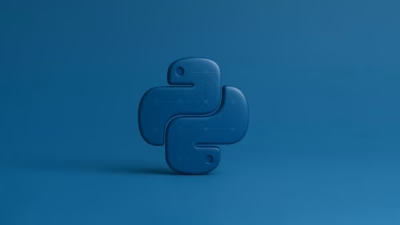Let’s be honest: “machine learning” sounds intimidating. It’s one of those terms that gets thrown around like confetti at tech conferences, slapped onto every product pitch, and jammed into casual conversations where it barely belongs. One minute you’re trying to find a new coffee machine online, the next you’re hearing that “the recommendation engine uses machine learning to personalize your experience.” Okay, sure. But…what does that actually mean?
If you’ve ever quietly Googled “what is machine learning” with one eyebrow raised and a growing sense of “am I the only one not getting this?” — you’re in the right place.
Let’s break it down together, like colleagues over coffee. No PhDs required.
Here’s the Big Idea
At its heart, machine learning is just this: teaching computers to learn patterns from data, without explicitly telling them what to do step by step.
That’s it. No magic. No secret sauce. Just pattern recognition on steroids.
Instead of hardcoding a million rules (“if the user clicks X, show Y”), we give the machine a bunch of examples and let it figure out the rules on its own.
Kind of like how you didn’t learn to recognize a cat by reading a formal definition of “a furry quadruped with whiskers and a tail.” You saw enough cats, and now you just know.
Computers can do something similar—with the right data, a lot of math, and some clever algorithms.
Why Now? Why the Hype?
Machine learning’s been around for decades, but a few things lit the recent fire:
- We’re drowning in data: Clicks, likes, transactions, sensors, selfies—machines have more to chew on than ever before.
- Computers got faster: What took days now takes minutes. Moore’s Law wasn’t joking.
- Open-source tools exploded: Today, you can build a basic image classifier with a few lines of Python and a YouTube tutorial. Not kidding.
Together, these made machine learning go from “niche academic research” to “used in your phone’s autocorrect.”
Let’s Talk Types: The 3 Big Buckets of ML
Now, not all machine learning is created equal. It comes in a few flavors, depending on what kind of problem you’re trying to solve and how much data you have.
Here’s the cheat sheet:
1. Supervised Learning: “Learn from the past”
This is the most common type—and the easiest to understand.
You give the algorithm labeled data (meaning you already know the right answers), and it learns to predict outcomes from that. Like teaching a kid with flashcards.
Example:
Say you’re trying to predict house prices. You feed the model a spreadsheet of past home sales: square footage, number of bedrooms, neighborhood…and the actual selling price. Over time, the model learns to map input features to outputs. Then when you give it a new house, it spits out a predicted price.
Other common examples: spam detection, credit scoring, diagnosing diseases from X-rays.
TL;DR: You give it questions and answers, and it learns to answer new questions.
2. Unsupervised Learning: “Find the hidden structure”
Now imagine you have no labels. Just a big pile of raw data. No answers, no hints.
Unsupervised learning tries to find patterns in the mess—clusters, groupings, relationships.
Example:
You have thousands of customer purchase histories. You don’t know which customers are alike, but you want to find segments (e.g., bargain hunters vs. big spenders). The algorithm looks for groups of similar behavior—without you telling it what to look for.
This is huge in marketing, anomaly detection, and recommendation engines.
TL;DR: No right answers—just patterns waiting to be uncovered.
3. Reinforcement Learning: “Learn by trial and error”
This one’s more dynamic—and honestly, a bit wild.
Instead of feeding a model static data, you let it interact with an environment and learn from consequences. Like training a dog with treats and scoldings.
Example:
Teaching a robot to walk. You don’t tell it how to move its legs. You just reward it when it stands longer, moves forward, doesn’t fall. Over time, it figures it out—step by awkward step.
You’ll find this behind game-playing AI (like AlphaGo), self-driving cars, and robotics.
TL;DR: Learn what actions lead to rewards over time.
Wait, So Is Machine Learning Just Fancy Statistics?
Fair question. You’re not wrong to ask.
At a foundational level, machine learning is deeply rooted in statistics. Linear regression—the simplest ML model—is something you probably covered in a college stats class. A lot of algorithms are just clever ways to minimize error, spot correlations, or optimize decisions based on probabilities.
But here’s where it goes further:
- ML emphasizes prediction over explanation. It doesn’t always care why a pattern exists—just that it helps make better guesses.
- It scales like crazy. Models can crunch millions of data points, hundreds of features, and still make decisions in milliseconds.
- It thrives on iteration. Train, test, tune, repeat. The machine gets better with feedback.
Think of ML as statistics with a gym membership. Faster, bulkier, and sometimes… a bit mysterious.
Let’s Bust a Few Myths While We’re Here
ML gets a lot of hype. And with hype comes… nonsense. Let’s clear a few things up:
- “ML can think like a human.” Nope. It finds patterns—it doesn’t understand context, nuance, or ethics.
- “ML always gives the right answer.” Ha. No. It gives the best guess based on data. Feed it junk? Get junk.
- “ML will replace all jobs.” Relax. It’ll change jobs, automate parts of them, sure. But humans are still very much in demand—especially ones who can interpret and guide these systems.
A Quick Peek at the Toolbox
If you’re the curious hands-on type, here’s what people actually use to build ML systems:
- Languages: Python rules the roost (hello, scikit-learn, TensorFlow, PyTorch). R is strong too, especially in academia.
- Frameworks: TensorFlow and PyTorch are the big dogs for deep learning. scikit-learn is the go-to for classic ML.
- Data tools: Pandas, NumPy, Jupyter—not technically ML tools, but essential for wrangling data before it ever touches a model.
- AutoML: For folks who want decent models without coding everything by hand. Think: Google AutoML, DataRobot, H2O.ai.
So Where Do You Start?
If all this has your curiosity tingling but your brain slightly buzzing, here’s a real-world starting plan:
- Get comfy with Python. You don’t need to be a software engineer. Just enough to read code and tweak things.
- Play with real datasets. Kaggle is gold for this. Try predicting Titanic survivors or classifying handwritten digits.
- Use scikit-learn. It’s beginner-friendly, well-documented, and supports almost every classic ML algorithm you’ll want.
- Understand the “why.” Don’t just run models—ask: What features matter? How accurate is it? Where does it fail?
- Keep your expectations in check. You’re not building Jarvis. You’re building a model that might be 83% accurate on recognizing spam. That’s still cool.
Here’s the Heart of It
Machine learning isn’t magic. It’s not a crystal ball, or a silver bullet, or a guaranteed path to a six-figure salary.
It’s just another tool in the data toolkit. A powerful one, no doubt. But like any tool, it’s only as good as how you use it—and how well you understand what it can’t do.
The best practitioners I know? They’re skeptical. Curious. Grounded. They test assumptions, question results, and spend more time cleaning data than training models.
If you’re someone who loves puzzles, hates fluff, and finds joy in watching messy data become meaningful—welcome. You’ll do just fine here.
tl;dr
- Machine learning = teaching computers to learn patterns from data.
- 3 main types: Supervised (labeled data), Unsupervised (find structure), Reinforcement (trial and error).
- It’s not magic, but it is powerful—with the right data and goals.
- Start with Python, scikit-learn, and hands-on datasets.
- Don’t chase complexity—chase understanding.
One last thing. The first time you build a model that actually works—even something silly, like predicting who survived the Titanic—it feels kind of electric. Not because it’s perfect, but because you built something smart. Out of data.
That’s the real thrill of machine learning. And it’s just getting started.





